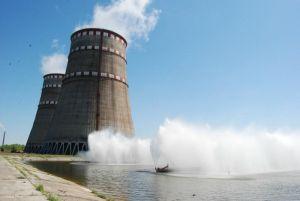[ad_1]

A financial expert has explained the logic behind the Ukrainian state’s recent nuclear-powered crypto mining push – claiming that the nature of the mining industry makes it an ideal partner to use up surplus power from the country’s nuclear reactors.
Inshe quoted Alexei Mushak, an economic advisor to the former Prime Minister Oleksiy Honcharuk, as stating,
“Modern equipment [ASIC miners] can turn on or off in the space of a minute. [Crypto] mining can smooth out fluctuations in consumption and generation [at nuclear power plants].”
This point is key, as many other conventional forms of industry – particularly those that can be built near nuclear plants in Ukraine – have little or no use for sudden injections of surplus power, and prefer a constant, steady, and predictable flow.
In the Inshe report, the author noted that cryptocurrency mining will likely allow NAEC Energoatom, the state-run firm that operates the country’s nuclear power plants, to expand its sales markets in the years ahead.
This would represent a huge change of fortunes for the company, which posted losses of over USD 171m last year.
The project is now being championed by the nation’s Minister of Energy, Olha Buslavets, whose ministry has authorized the construction of so-called “data centers” – essentially mining farms for Bitcoin (BTC) and some major altcoins – at four nuclear power plants.
The success or failure of the effort will likely hinge on the results of a pilot currently being conducted at Europe’s largest nuclear power station, Zaporizhzhia – a station with an annual net output of 29,299 GWh and a nameplate capacity of 5,700 MW.
Regardless, the government appears to be backing the Energoatom project to the hilt, with the cabinet adding the crypto mining initiative to its list of priority projects to be completed by 2023 in December last year.
Elsewhere in the world, miners have successfully set up shop in energy-producing hotspots, including projects at some of South America’s biggest hydropower stations and more controversially near some of China’s most highly polluting and oldest coal power generators.
But Ukraine’s mainly Soviet-era reactors have become the subject of much public scrutiny in recent years, with many claiming that the loss-making energy sector is dragging public spending into the dangerous economic territory.
Ministers have unveiled plans to involve local players in the project, and Energoatom has already struck deals with heavy-hitting miners such as BitFury, with construction deals signed with contractors and groundbreaking work already underway at some sites.
___
Learn more:
– A Closer Look at the Environmental Impact of Bitcoin Mining
– Proof-of-Disagreement: Bitcoin’s Work vs. Ethereum’s Planned Staking
– This Is How Satoshi Nakamoto Defended Bitcoin Mining & Converted A Skeptic
– Ethereum Moves Ahead With Plans for Earlier Transition to Proof-of-Stake
– Bitcoin Mining in 2021: Growth, Consolidation, Renewables, and Regulation
– Bitcoin Miners Buy Oversupplied Energy, Turn To Renewables – Nic Carter
[ad_2]


